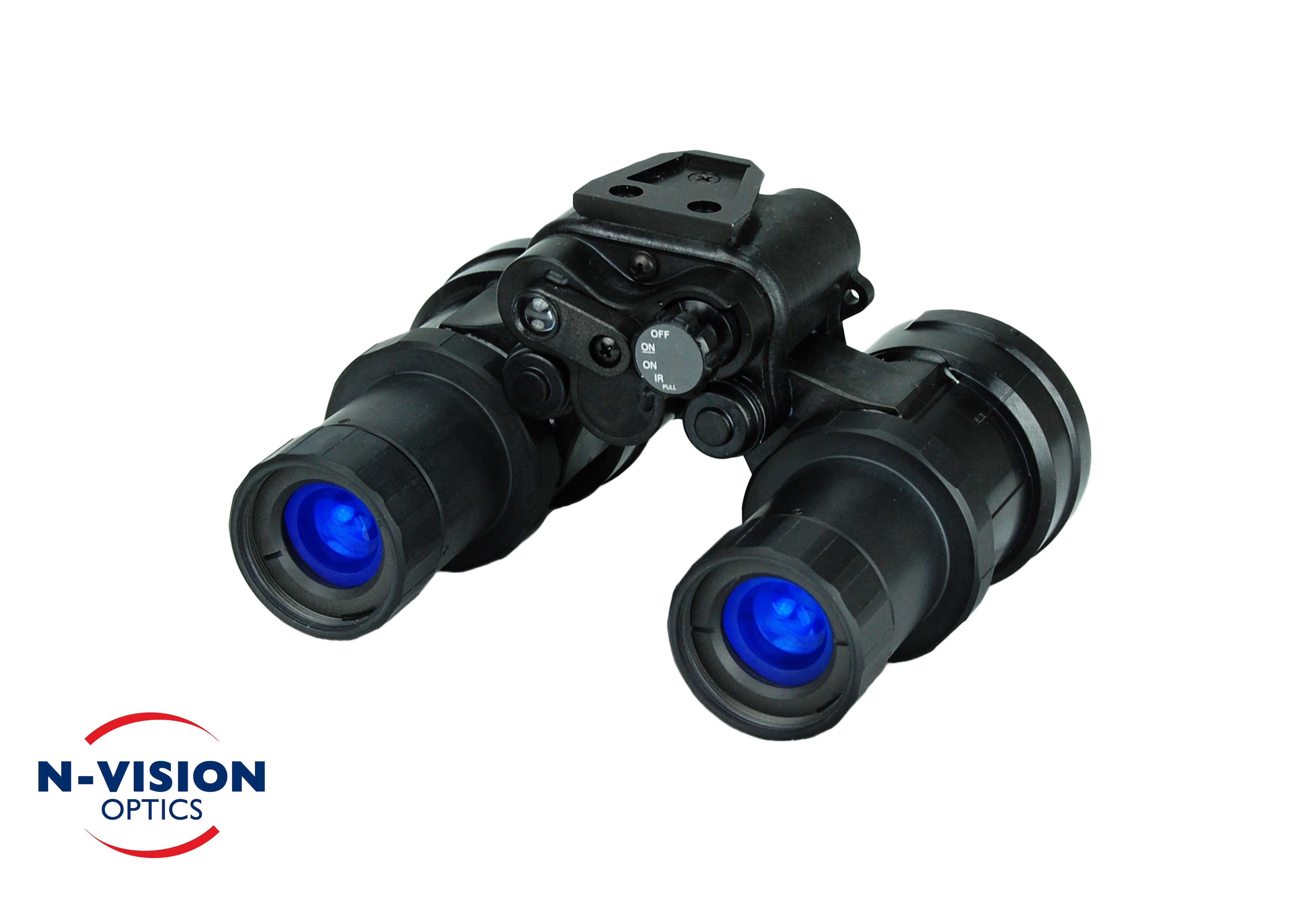N-Vision Optics is proud to announce our new Wide Field of View (WFOV) PVS-15 Night Vision Binocular. The WFOV PVS-15 features a ground-breaking 80° wide circular field of view without compromising optical resolution, size, weight, or power consumption (SWaP). The WFOVB PVS-15 is developed and built by Kent Optronics, where their proprietary foveal design of the objective and eyepiece lenses, provide the wide FOV with a high, on-axis resolution.
he 80° FOV is twice as wide as that of the standard AN/PVS-15 NVG. The limited 40° FOV of standard AN/PVS-15 NVGs restricts the off axis detection, and thus hinders peripheral vision. In addition, aggressive head scanning is necessary for maintaining minimal situational awareness, which presents the possibility of disorientation, neck strain, and fatigue for operators. The increased FOV guarantees a true 2-dimensional (2-d) wide area coverage in a much more compact and lightweight package.
WFOV PVS-15 is available as a retrofit for the standard AN/PVS-15 system or can be purchased as a brand new wide field of view binocular.
Contact Us:
For more information about the WFOV PVS-15 or other products from N-Vision Optics, email us at info@nvisionoptics.com or visit our website at www.nvisionoptics.com.
Visit us at SHOT Show:
Tags: Kent Optronics, N-Vision Optics





What is lost when this extra 40 degrees is won? Someone enlighten me. Is there a trade off ?
If you look at the wide FOV picture above, you’ll see things appear smaller. So it will be harder to make out detail in distant objects. I’d imagine it would be similar to adjusting the FOV slider on a first person video game.
It’s not quite accurate. Magnification stays the same and there is no pronounsed fish eye effect. Picture is not representative and demonstrates strictly increased FOV. Performance of the system matches performance of the human eye more than anything else. From one of the links that I posted below “Naval Surface Warfare Center Crane optical scientists reported a 14 percent improvement in combat efficiency as well as a 28 percent hike in movement speed through the WFOV NVG system, according to the Navy.”
I will make it a point to come the booth for a peak. Will we have an opportunity to view this through the unit, or will everything be displayed on video/photos?
Agreed, it appears that the magnification is reduced (Granted there is no magnification on standard units) but it’s like you are looking through binoculars backwards. I can’t imagine what this would be like wearing these while conducting combat operations….but maybe I am missing something. I would be happy if they could come up with a better focusing solution that keeps everything in focus without the reduction of light.
I believe magnification is still 1x. Nobody would use NVG with magnification less than 1x (it would be too difficult to orient with it). They probably found some other way to achieve WFOV.
So this is like walking around with a fisheye on your NVGs?
From what I’ve read before on this (it’s kind of oldish news at this point) the idea is kind of like fisheye, hotel room door peep hole viewing, except that Kent Optronics has come up with a lens design that nearly eliminates any distortion.
So in the end, the effect is more like what Mandaloin said in the above comment than a hotel room door.
It takes the combination of the front objective and eyepiece lenses to achieve the effect.
Some background here:
http://www.militaryaerospace.com/articles/2016/05/night-vision-goggles.html
and here:
http://blog.executivebiz.com/2016/06/navsea-starts-new-night-vision-goggle-tech-integration-for-expeditionary-combat-command/
Foveal design of eye pieces (and matching objectives) does not allow to take a picture that truly represents performance of the system but you can check it yourself at the Shot Show.
The pic shown is a non-example of increasing FOV. An increase in FOV would have objects being the same scale, size, with a larger area shown.
When bending light you will have decreased resolution with increased FOV. So decreased clarity at distance. With the newest I2 tubes, greatly increased FOM, this might be a decent tradeoff, or not.
If the unit is presenting a larger image circle through the eyepiece, which is the only way I can think it would work without making objects appear smaller than our normal vision is used to, then a monocular version of this would have great applications for adaptation onto DSLR’s.
If the photo does not represent real state of magnification, why do you post it, confuse everyone and degrade your product?